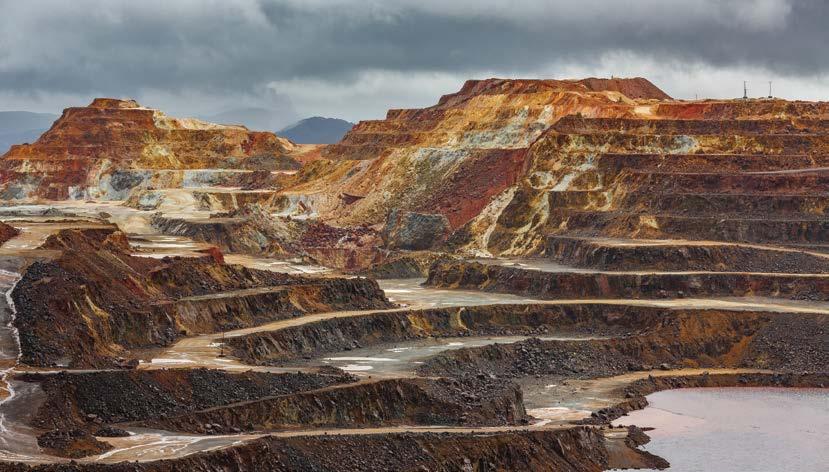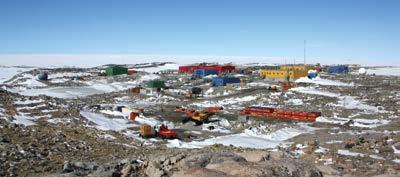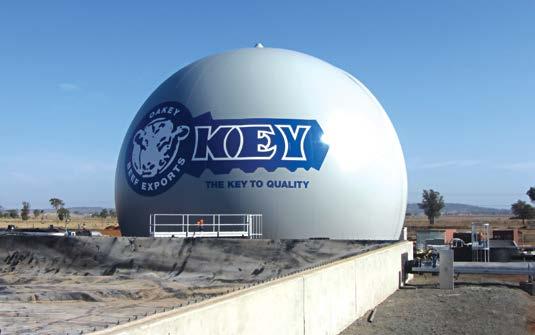
5 minute read
Climate Change
UQ researchers develop framework for climate change mitigation in mining
University of Queensland researchers have developed a framework that aims to reduce the mining industry’s impact on climate change by accounting for sources and sinks of greenhouse gas (GHG) emissions. The proposed framework, published in Nature Geoscience, will allow the mining industry to better monitor, gather and assess emissions data, identify measurement gaps and evaluate and apply mitigation strategies.
Advertisement
UQ Sustainable Minerals Institute (SMI) researcher and lead author Dr Mehdi Azadi said primary mineral and metal production accounted for about ten per cent of the world’s energy-related GHG emissions in 2018. He said the framework addressed climate change related issues by identifying major mitigation pathways.
“Rising standards of living have led to increasing demand for mining activities to provide the minerals and metals required by many technologies,” Dr Azadi said.
“While the mining sector contributes to global emissions, it is also increased affected by climate change.”
“Our framework examines the sources of GHG emissions across the mining supply chain – from mining, ore processing, transportation, to waste management – and identifies ways to improve mitigation strategies,” he said.
“Fugitive emissions reduction, resource efficiency, energy usage, and biological solutions are the four major pathways we have identified as major opportunities for GHG mitigation in mining. These pathways will allow policymakers and miners to create flexible plans for addressing GHG emissions by taking into account operational requirements and external factors,” Dr Azadi added.
“The framework is flexible enough to be tailored to a specific commodity, mining operation, climate or country.”
The researchers highlighted copper mining in Chile as an example of how the climate change impacts of mining may be calculated.
“Using this framework, we hope to collaborate with governments, the mining industry and research institutions to create guidelines or toolboxes for certain commodities, climates, countries and operations,” Dr Azadi said.
“Our framework will help the industry reduce its carbon footprint and provide financial benefits by lowering energy consumption across the supply chain, while also decreasing the adverse environmental impacts caused by mining operations.”
“For green technologies to be effectively implemented, it is essential that the mining industry accurately and transparently account for greenhouse gas emissions,” Dr Azadi said. “But this isn’t just about reducing mining’s effect on climate change, it is also about reducing climate change’s effect on mining; the industry needs accurate data to reduce its carbon footprint and improve risk management.”
The article is co-authored by SMI Associate Professor Mansour Edraki, UQ and University of Delaware Professor Saleem H. Ali and University of Technology Sydney’s Dr Stephen Northey.
Professor Saleem H. Ali said carbon accounting in mining was increasingly important.
“Carbon accounting of mining is becoming even more urgent now because minerals for clean energy infrastructure are being widely explored,” he said.
“Understanding the full carbon budget of extraction is important in considering a range of potential supply sources and processing technologies.”
SMI Director Professor Neville Plint said the framework reflects the Institute’s commitment to working with the minerals industry to implement sustainable changes.
“An important part of improving mining’s role in sustainable a sustainable world is working with industry to develop and implement solutions that are practical and effective – this framework is a great example of that.”

Reducing human
impact in the Antarctic
Findings from the first wide-ranging environmental assessment of the Australian Antarctic Division’s Casey research station suggest better data will be key to reducing the impact of future operations.
Improvements in data collection, better monitoring equipment and behaviour change were among the key recommendations in the report, the findings of which were published recently in the Journal of Industrial Ecology.
The result of a six-year study undertaken by RMIT and Swinburne Universities, the report is the first comprehensive assessment of the environmental impact of Australia’s Antarctic infrastructure.
The researchers were commissioned by the Australian Antarctic Division to look at the life cycle of Casey research station to determine where the impact of operations could be reduced.
Lead researcher, RMIT’s Associate Professor Karli Verghese, said the findings provide a roadmap for the AAD to reduce the environmental impact of the station.
“We modelled scenarios around freight management options, energy efficiency, generation and storage, and wastewater management to identify the best approaches going forward,” said Verghese.
“This information will help inform the future operations of the station, ensuring the AAD can reduce the environmental impact of having people in this environment.”
The AAD received early findings from the study in 2018 and is looking for opportunities to implement some of the recommendations in current and future operations.
AAD’s Environmental Manager, Andy Sharman, said the Division continually seeks opportunities to improve efficiency and reduce environmental impacts including emissions to the atmosphere and the marine environment in Antarctica and the Southern Ocean.
“This work provides us with a detailed assessment that we can use when upgrading our existing station infrastructure and plan for new capabilities such as the arrival of Australia’s new icebreaker, RSV Nuyina and the development of an inland traverse capability.
In March 2019, the AAD installed the first Australian solar farm in Antarctica at Casey research station, providing up to 30 kilowatts of power and already saving close to 4000 litres of diesel.
“The energy savings from this system are expected to increase even more through the peak of summer when there is almost 24 hours daylight,” Mr Sharman said.
The AAD runs four permanent research stations, three on the Antarctic continent and one on Macquarie Island in the sub-Antarctic.
Insights from the report will help to compare and benchmark between stations and to guide future projects.
The Journal of Industrial Ecology has published two academic papers from the assessment, 'The environmental impacts of operating an Antarctic research station' and 'Development of an environmental impact reduction strategy for Australia’s Antarctic infrastructure', that can be downloaded for free for the next three months from: https://onlinelibrary.wiley.com/doi/10.1111/jiec.12972 and https://onlinelibrary.wiley.com/doi/10.1111/jiec.12970 respectively.
Powering a Sustainable Future
Did you know you can access the latest issue of Waste + Water Management Australia via Informit? The Informit Engineering Collection is an ever expanding resource covering aspects of waste and water management – recycling, greenwaste processing, waste minimisation, planning, safety, water treatment and water sensitive urban design. The database offers an extensive variety of resources including journals, trade publications, reports and conference proceedings.
The Collection guarantees quality through partnerships with peak professional bodies including Engineers Australia and the Institution of Professional Engineers New Zealand, as well as Content Providers including EPC Media Group.
The Informit Engineering Collection delivers hard to find content designed to complete and complement all your waste and water management requirements.
Other key titles published by EPC Media include:
Highway Engineering Australia Construction Engineering Australia
Request a quote or free trial via www.informit.org/trial-and-quote
Research for your global future










